Neuroanatomical atlas illustration plates from the 1786
'Traité d'Anatomie et de Physiologie' by Félix Vicq D'Azyr
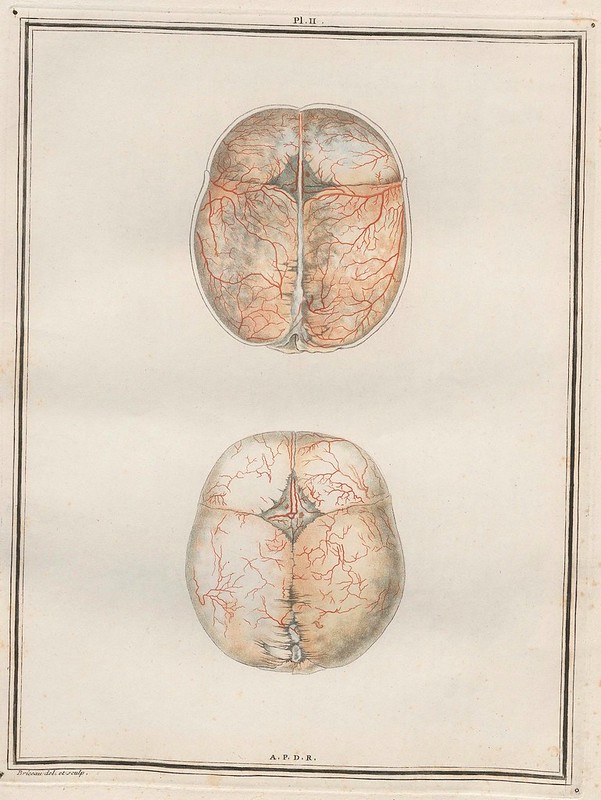
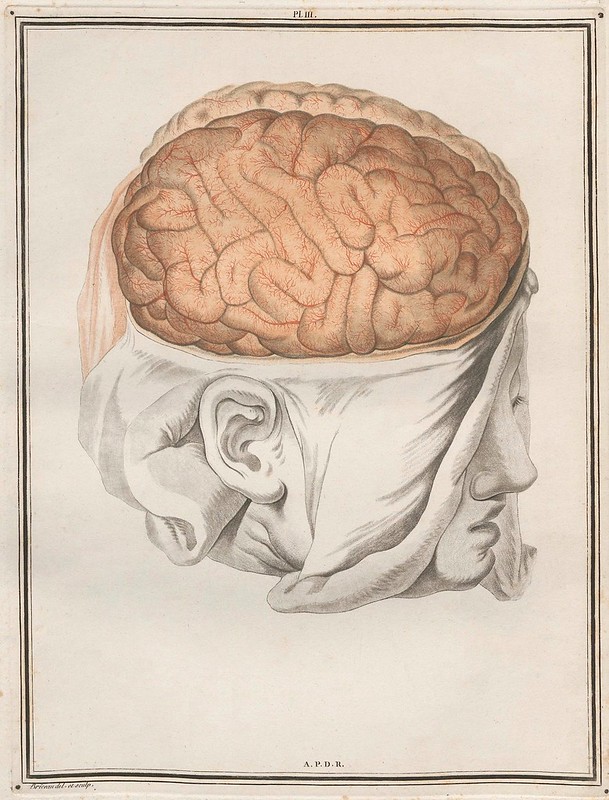
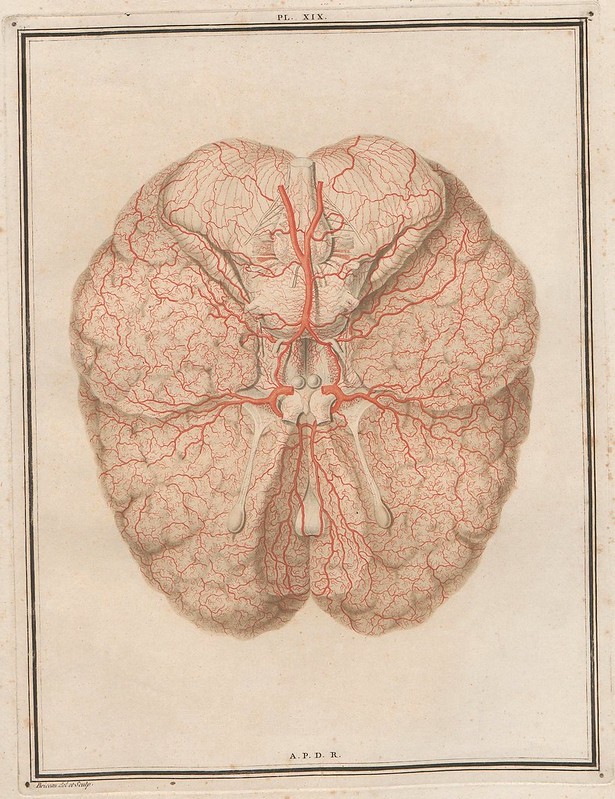
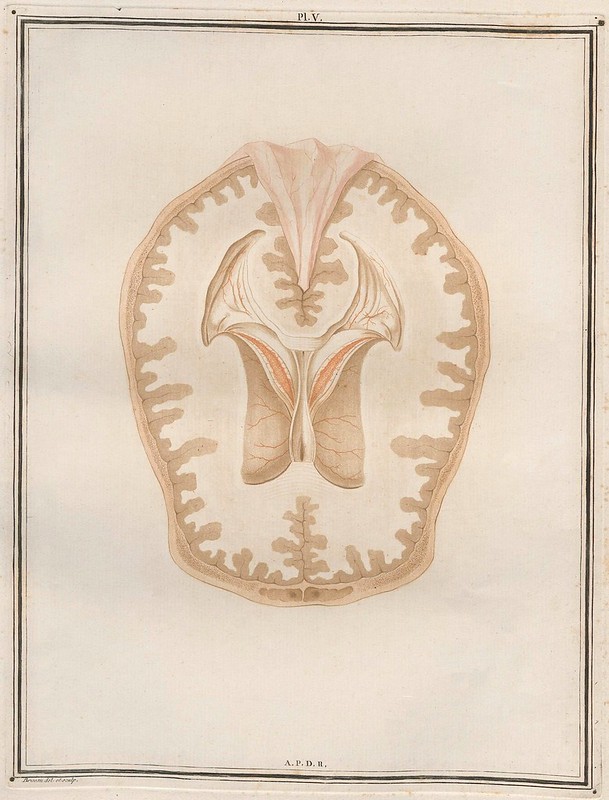
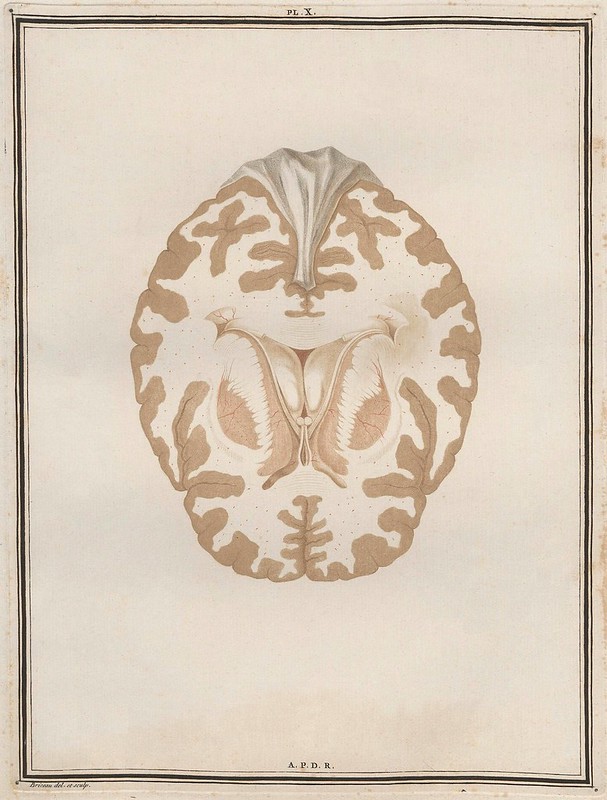
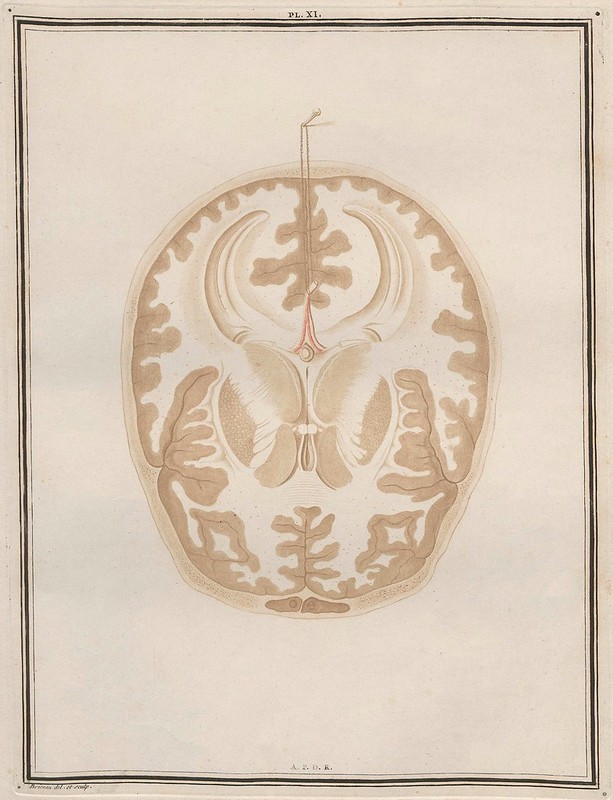
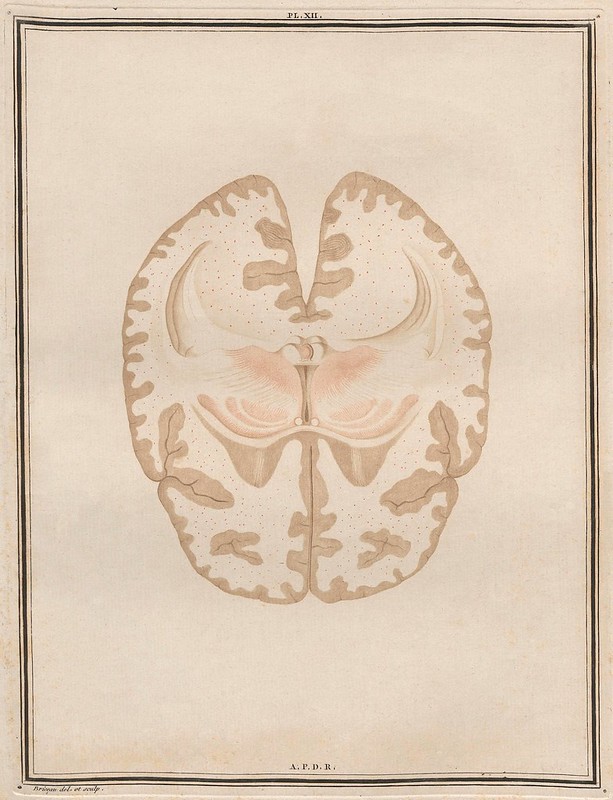

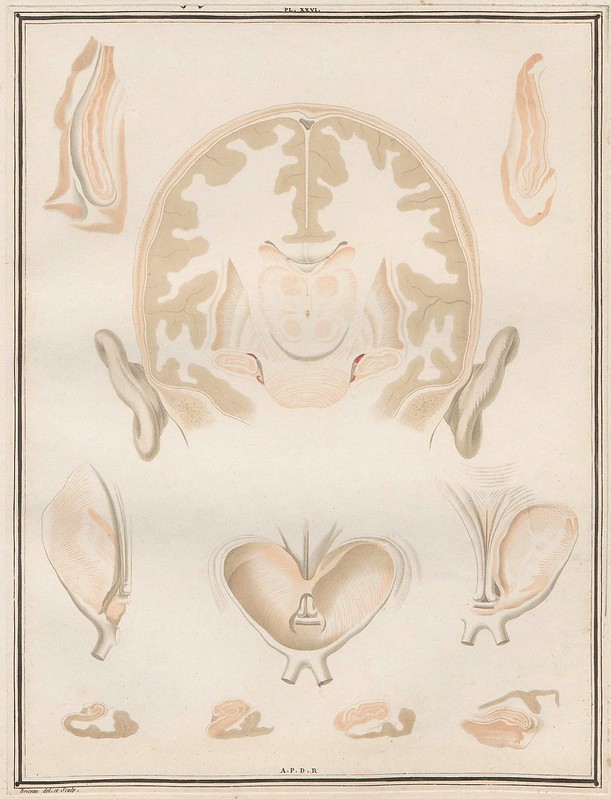

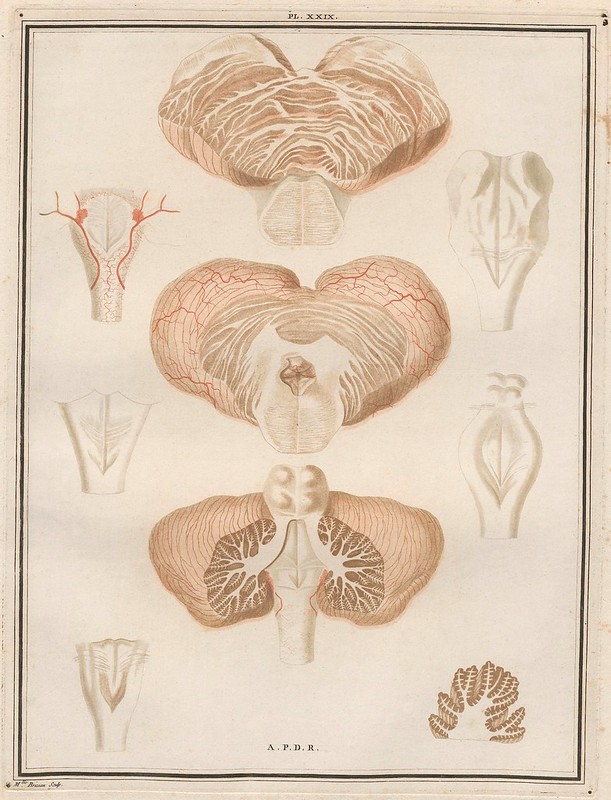
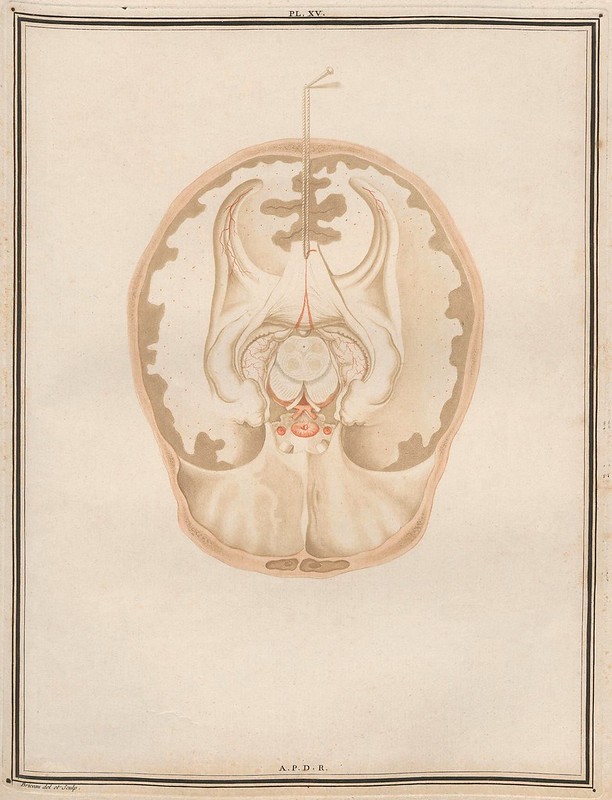
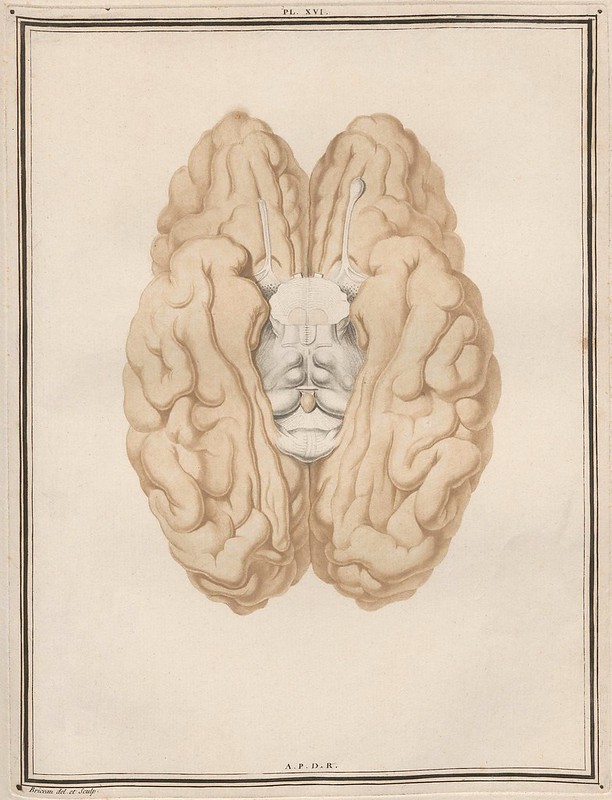
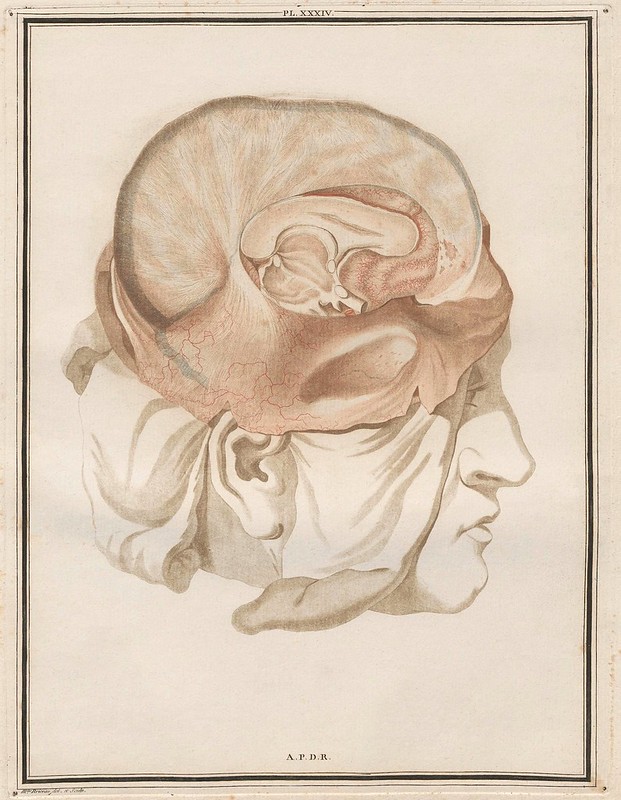
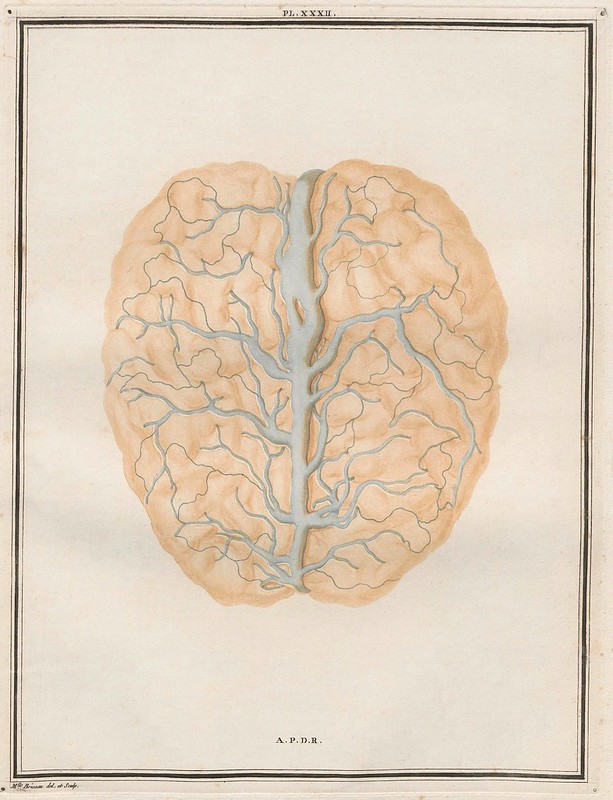
[All the images above have been extensively background cleaned
and the colour saturation has been boosted to a modest degree]
"Félix Vicq d’Azyr (1748-1794) was Queen Marie-Antoinette’s physician and a member of the French Academy of Sciences and of the Academy of Medicine. He wrote the section on pathological anatomy in 'L’Encyclopédie' by Denis Diderot and Jean le Rond d’Alembert, and in 1786 published 'Traité d’Anatomie et de Physiologie', which was lauded as one of the most realistic works of neuroanatomy. [It was described as "the most accurate neuroanatomical work produced before the advent of microscopic staining techniques": Garrison-Morton^ / "The work was issued in eight fascicles. The publication of the planned multi-volume work was interrupted by the French Revolution and the author’s premature death"*]
To illustrate his treatise, Vicq d’Azyr called upon the engraver Alexandre Briceau and his daughter Angélique, who used aquatint, an intaglio printmaking technique. A layer or successive layers of acid-resistant resin are baked onto a copper plate, which is then immersed in nitric acid to create different tones in the unprotected areas between resin particles, depending on acid concentration and exposure time. The plate is inked and prints are made. This complex technique achieves the delicacy of wash-paints, crayons, watercolors, and pastels. The etcher makes three plates, using aquatint (ochre), point engraving (red), and cutting wheel (black)." [source]
[Vicq d’Azyr] found that his dissections of the brain were facilitated by first hardening the brain in alcohol. He identified accurately for the first time many of the cerebral convolutions, along with various internal structures of the brain. He rediscovered the white line in calarine cortex and described the mammillothalmic tract which still bears his name, as well as the central sulcus with the pre- and postcentral convolutions and insula twenty years before Reil and Rolando." [source]
- 'Traité d'Anatomie et de Physiologie' by Félix Vicq d'Azyr was recently uploaded by Universitätsbibliothek Heidelberg (click 'Einband' and then 'Vorschau' for thumbnail pages)
- Félix Vicq d’Azyr at Bibliothec Systema Naturae : Hagströmer Medico-Historical Library. [W]
- [PDF] : Felix Vicq d'Azyr: Anatomy, Medicine and Revolution by André Parent IN: The Canadian Journal of Neurological Sciences.
- Medicographia: Body painting: five centuries of French anatomical illustrations.
- Long biography (in French) from a Parisian health university.
- Anatomia 1522-1867 : Anatomical Plates from the Thomas Fisher Rare Book Library (U Toronto).
- Historical Anatomies on the Web (National Library of Medicine).
- A copy of the book sold for >$20,000 a few years ago.
- Works by Vicq d'Azyr at Worldcat.
- Works by Vicq d'Azyr at the Internet Archive.
- Portraits of European Neuroscientists.
- Just because I found it: Bainbridge College biology course page with links to many different neuroanatomical atlas images.
- Previously: medicine :: science.



















4 comments :
I like how some resemble Rorschach blots – Plate X, for example – while patterns in many of them suggest faces or other anatomical parts. It seems an appropriate kind of pareidolia.
I just love your blog. I have a question about your design: Your nice widget on the lower right side of your blog, with the square tumbnails from other posts, it looks fab, and I want it for my blog. Is it official or home made? Can I get it somewhere?
Thanks!
Stan, pareidolia is a fabulous word and yes, there's a certain satisfying irony in brain slice illustrations evoking alternative images from the imagination.
Henning, they are indeed hand-crafted. You can best tell this from how old they are and how lazy I am: there was a time when I was motivated to spend hours going through old posts finding that 'special' square of representative visualia for the sidebar. You should be able to get the code from a 'view source' in your browser. If that doesn't work for some reason, email me: peacay at that gmail place dot commie. I think there's a whole stock of images/posts and there's a couple of sidebar widgets that randomly pulls 20 or so from that store. But I haven't even looked at that code in a couple of years. Did I mention L.A.Z.Y. ?
Thank you! You're Amazing!
Post a Comment
Comments are all moderated so don't waste your time spamming: they will never show up.
If you include ANY links that aren't pertinent to the blog post or discussion they will be deleted and a rash will break out in your underwear.
Also: please play the ball and not the person.
Note: only a member of this blog may post a comment.